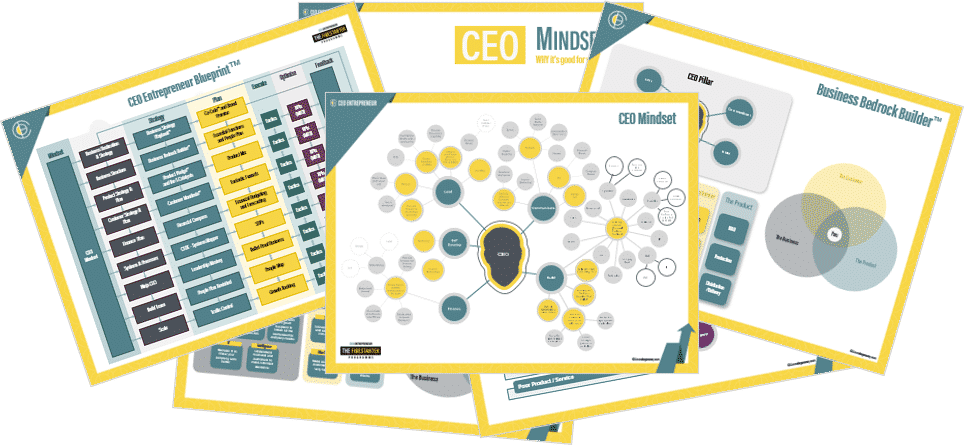If you haven’t heard of Marie Kondo, maybe you’ve been hiding under the mountains of things you’ve accumulated in your business, and her fame has passed you by. For those of you who have heard of Marie Kondo, you are probably familiar with the KonMarie approach from her book (2011) or more recently her Netflix show. In its most basic form, it is a Japanese principle of removing anything from our homes that does not spark joy in order to find mental clarity. It teaches some valuable insights about minimalism and keeping things simple.
How can we apply this to business?
Now, I’m not suggesting you take the parts of your business that don’t spark joy and throw them out. I hate writing and keeping track of invoices, but I’m not about to throw them out because they don’t spark joy. After all, not being paid is certainly not going to make me happy.
By taking a slightly different approach, it’s possible to use the method to identify the parts of the business that we don’t enjoy, relinquish control and hand them over to someone else. I’m talking about outsourcing and automation. Along the way, it’s also possible that areas will be identified that can be thrown out altogether and when thinking about sparking joy, it might even be that you want to add new things as well as removing some. It should help to give you a sense of what you love and what direction you want to take your business in.
Let it go
Marie Kondo says that you should look at everything individually and decide whether it still sparks joy. If it doesn’t, it’s time to say goodbye. In addition to this, you are supposed to thank each item as you bin it (I mean set it free!). As strange as this may seem when we apply it to a business setting, actually it’s a great practice. Looking at each aspect of your business and acknowledging the part it has played and how it’s helped you get to where you are, can be hugely motivating and allow you to move on and make a path for what’s to come.
It’s a great way of making goals and by analysing what worked once but no longer serves, and thinking instead about what would work. It is also a great way of discovering the things that don’t spark joy but are still essential to the business. These are things that have the potential to be outsourced or automated.
The rooms of your business
Marie Kondo helps people declutter their homes by working from room to room. This makes less sense when applying the principle to your business, so instead of rooms, plan your decluttering in terms of categories. Break your business down into areas such as administration, marketing, finances, or whatever categories suit your business.
Taking each category one at a time, put everything in a virtual pile and take each element at a time and discard what doesn’t spark joy. Of the pile of discarded elements, you can work on which can actually go and which could potentially be handed over to someone else or automated. Whilst this isn’t actually ‘throwing stuff out’ as it were, it has the same effect of freeing up your time, reducing stress and giving mental clarity.
Do it all in one go
Decluttering really should be easy, but Marie Kondo points out that in a world where we have so much, we don’t always know what we want and what we need. Kondo explains that:
“A short time after tidying, their space is a disorganized mess. The cause is not a lack of skills but rather lack of awareness and the inability to make tidying a regular habit. In other words, the root of the problem lies in the mind. Success is 90 percent dependent on our mindset.”
Marie Kondo believes that most people tidy in small bursts, but to really notice a profound change that touches our emotions and changes our habits, it needs to be done in one go. When you can see and feel the results, it prompts real change and a motivation to keep it that way.
Tidy what is left
By focusing on categories, you can really drill down into each area and organise it systematically. When talking about decluttering houses, Marie Kondo recommends storing items in a way that allows you to see them all at the same time. In terms of your business, this could be thought of in terms of storage space. Rather than having some things on a memory stick, some in physical folders and others saved virtually, it makes sense to have all items stored together, whether it is on a cloud, a hard drive, or somewhere else.
She also recommends a streamlined approach, so after your purge, it is the perfect time to think about what this means for your business and to put a system in place.
Automation
With streamlining in mind, there may be elements of your business that you have discovered can be automated. What you decide to automate depends entirely on your business. It could be email sequences, a sales funnel, contact emails, lead automation, or a help bot. It can even be used to aid recruitment and selection.
When thinking about automation, start with the easiest process first. Something like a welcome email when people subscribe to your list has no added benefits if you do it personally overusing automation software, and automating it actually reduces human error and saves you masses of time.
Tim Draper, the founder of Draper Associates, suggests looking for repetition when considering automation in your business. Whenever you find repetition, such as the sending of welcome emails mentioned above, there can be an automated system in place that does the job as well as, or better, than you can do it yourself.
By using automation to fulfil some of the areas of your business that don’t light you up and those that have become repetitive to you, you can spend more time on more activities that allow for innovation and growth. This might be developing original ideas, building a team, or winning new contracts.
Outsourcing
Now take a look at that ‘pile’ of items you discarded. How many of them can actually be removed from your business and how many of them need to be there even though they don’t spark joy? Those that need to stay but fill you with dread are a good place to start thinking about outsourcing.
Every business that grows and develops ends up with more tasks than time. No matter how good you are at streamlining and time management, there comes a time when if you want to keep growing, you may need some help. There is always the option of taking on staff but there is also the option of outsourcing.
Outsourcing is simply handing over some aspect of your work to someone outside of the business. This could be a freelancer, a call centre, a virtual assistant, or a recruitment agency for example. Whatever you choose, it should be used as a way to rid you of the things that don’t serve you and free you up to do more of the things you love and that make your business great.
Don’t make this a once-off approach
Use this process in your business going forward. Every time you take on a new client, invest in stock, or recruit someone new, ask if it sparks joy and if it doesn’t, think of another way. This is key to not needing to do another purge in the future. By ensuring your business is a place you and others want to work in, by adhering to Marie Kondo’s principles, you should be happier, less stressed, and gain the clarity to grow and develop yourself and your business.
Leverage decades of business experience from every angle to get to the heart of your business challenges—with insights and a road map to inspire business possibility. Contact us for more.


